
Eriodictyon altissimum is a rare species of flowering plant in the borage family known by the common name Indian Knob mountainbalm. It is endemic to San Luis Obispo County, California, where it is known from only about six occurrences in the Irish Hills on the coast and nearby Indian Knob.

Campanula robinsiae is a rare species of flowering plant in the bellflower family known by the common names Brooksville bellflower, Robins' bellflower, and Chinsegut bellflower. It is endemic to Florida, where it is known from four or five occurrences in Hernando and Hillsborough Counties. Its population has fluctuated throughout the years; at one point in the early 1980s it was feared extinct. Today there are two populations in Hernando County and probably three in Hillsborough River State Park. At the time the plant was listed as an endangered species of the United States in 1989, it was known from three small populations on wet prairies that were threatened by changes in the local hydrology and by pollution. It was also thought to be threatened by vandalism, trampling, and collecting by flower enthusiasts. Cattle grazing and invasion of the habitat by the exotic skunkvine also degrade the habitat.

Chionanthus pygmaeus is a rare species of flowering plant in the olive family known by the common name pygmy fringetree. It is endemic to Florida, where there are 46 known occurrences as of 2010. The plant is found in increasingly rare habitat in Central Florida that is being consumed for development, and some protected areas are not managed adequately. Most populations are small. It is a federally listed endangered species of the United States.

Chrysopsis floridana is a rare species of flowering plant in the family Asteraceae, known by its common name, Florida golden aster. It is endemic to Florida in the United States, where it is known from Hillsborough, Hardee, Manatee, and Pinellas Counties. It is considered an endemic of the west-central coast of the state in the general vicinity of Tampa Bay. There are 17 to 20 occurrences, many of which have few individuals, but one of which has over one million plants. In 1986 the plant was added to the US endangered species list because it was becoming increasingly rare, it was growing only on private property, and its habitat was unprotected and being destroyed and degraded by a number of forces. It is found at Bell Creek Nature Preserve in Riverview, Florida.
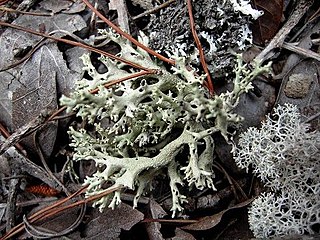
Cladonia perforata is a rare species of lichen known as Florida perforate cladonia and Florida perforate reindeer lichen. It is endemic to the state of Florida in the United States, where it is known from 16 populations in four widely separated areas of the state. It is native to a very specific type of Florida scrub habitat which is increasingly rare and patchy due to habitat destruction, degradation, and fragmentation. In 1993 this was the first species of lichen to be federally listed as an endangered species of the United States.

Clitoria fragrans is a rare species of flowering plant in the legume family known by the common name pigeon wings, or sweet-scented pigeon wings. It is endemic to Central Florida, where it was known most recently from 62 occurrences, but no current estimates of the total global population are available. The plant is a federally listed threatened species of the United States.

Conradina glabra is a rare species of shrub known by the common names Apalachicola rosemary or Apalachicola false rosemary. It is endemic to Liberty County, Florida, where it is known from about ten populations. It is found only in a small area and it is threatened by habitat destruction. It is a federally listed endangered species.
Dicerandra cornutissima is a rare species of flowering plant in the mint family known by the common names longspurred mint, longspurred balm, and Robin's mint. It is endemic to Florida in the United States. It is found in Marion County, and possibly Sumter County, but it may have been totally extirpated from the latter. There are 12 known occurrences remaining as of 2017, down from 15 in 2000. The plant was federally listed as an endangered species in 1985.
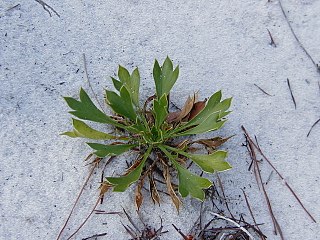
Eryngium cuneifolium is a rare species of flowering plant in the carrot family known by the common names wedgeleaf eryngo, wedge-leaved button-snakeroot, and simply snakeroot. It is endemic to the state of Florida in the United States where it is known only from Highlands County. It is one of many rare species that can be found only on the Lake Wales Ridge, an area of high endemism. It was federally listed as an endangered species of the United States in 1987.
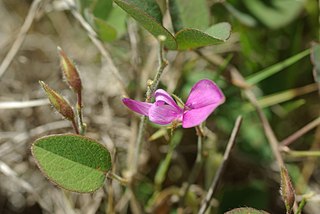
Galactia smallii is a rare species of flowering plant in the legume family known by the common name Small's milkpea. It is endemic to Florida, where it is known only from a few small patches of remaining habitat in Miami-Dade County. It is threatened by the destruction and inadequate management of its habitat. It was federally listed as an endangered species of the United States in 1985.
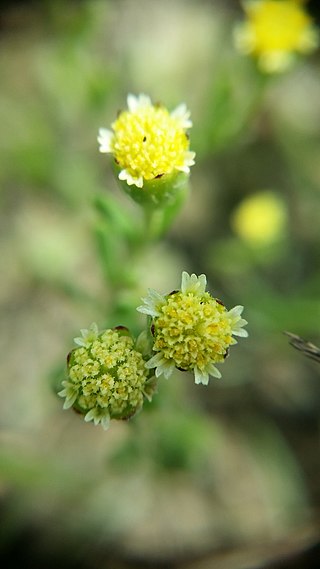
Hymenoxys texana is a rare species of flowering plant in the aster family known by the common names prairie dawn, Texas prairie dawn-flower, and Texas bitterweed. It is endemic to Texas, where it is known only from the general vicinity of Houston. It is threatened by the loss of its habitat. It is a federally listed endangered species of the United States.

Hypericum cumulicola is a rare species of flowering plant in the family Hypericaceae known by the common name highlands scrub hypericum, or highlands scrub St. John's wort. It is endemic to Florida, where it is threatened by habitat loss and degradation. It is a federally listed endangered species of the United States.

Liatris ohlingerae is a rare species of flowering plant in the family Asteraceae known by the common names Florida blazing star, Florida gayfeather, scrub blazing star, and sandtorch. It is endemic to Florida in the United States, where it occurs only on the Lake Wales Ridge along with many other rare plants. It is threatened by the loss and degradation of its habitat, and it is federally listed as an endangered species.
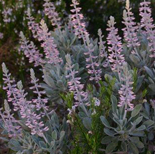
Lupinus aridorum is a rare species of lupine known by the common name scrub lupine. It is endemic to Florida in the United States, where there were 10 known populations remaining in 2003. Fewer than 6000 individual plants were counted. It is threatened by the loss and degradation of its habitat. The scrub lupine is a federally listed endangered species of the United States.

Paronychia chartacea is a rare species of flowering plant in the family Caryophyllaceae known by the common names papery Whitlow-wort and paper nailwort. It is endemic to Florida in the United States. There are two subspecies of the plant; ssp. chartacea occurs in Central Florida, especially the Lake Wales Ridge, and ssp. minima is native to the Florida Panhandle. The two subspecies are geographically separated and do not occur together. Both are included on the federal Endangered Species List, on which the species is designated threatened.

Senega lewtonii is a rare species of flowering plant in the milkwort family known by the common name Lewton's polygala, or Lewton's milkwort. It is endemic to Florida in the United States, where it is limited to the central ridge of the peninsula. There are about 49 occurrences of the plant remaining. Most occurrences contain very few plants. The species is threatened by the loss and degradation of its habitat. This is a federally listed endangered species of the United States.
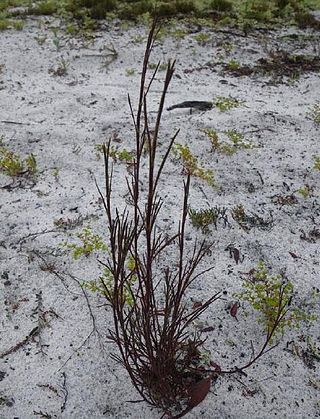
Polygonum basiramia is a rare species of flowering plant in the knotweed family known by the common names wireweed, hairy wireweed, purple wireweed, and Florida jointweed. It is endemic to Florida in the United States, where it is limited to the central ridges of the peninsula, including the Lake Wales Ridge. It is threatened by the loss and degradation of its habitat. It is a federally listed endangered species of the United States.

Polygonum dentoceras is a rare species of flowering plant in the knotweed family known by the common names sandlace, woody wireweed, and Small's jointweed. It is endemic to Florida in the United States, where it is limited to the central ridges of the peninsula, including the Lake Wales Ridge. It is threatened by the loss and degradation of its habitat. It is a federally listed endangered species of the United States.

Thalictrum cooleyi is a rare species of flowering plant in the buttercup family known by the common name Cooley's meadow-rue. It is native to the southeastern United States, where it is present in North Carolina, Georgia, and Florida. It is threatened by habitat destruction and degradation. It is a federally listed endangered species of the United States.
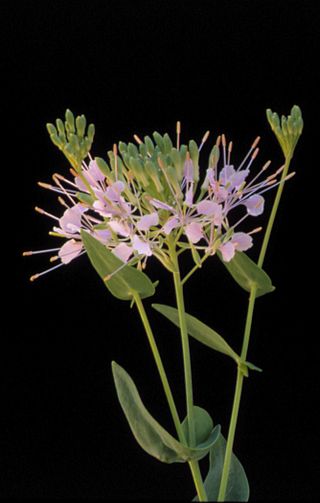
Warea amplexifolia is a rare species of flowering plant in the mustard family known by the common names wideleaf pinelandcress, wide-leaf warea, and clasping warea. It is endemic to Florida in the United States, where it is limited to a few counties in the central part of the peninsula. It is threatened by the loss and degradation of its habitat. It is a federally listed endangered species of the United States.




















